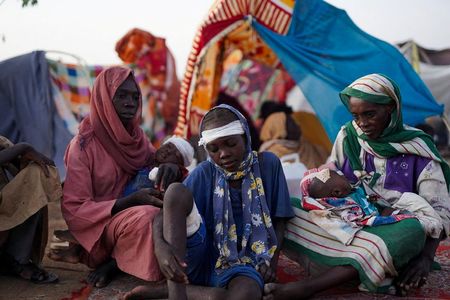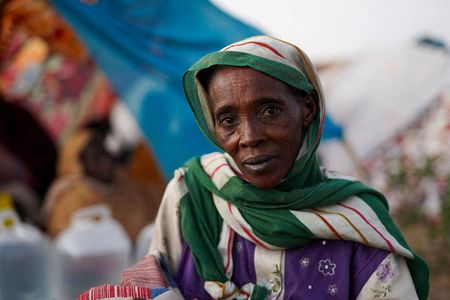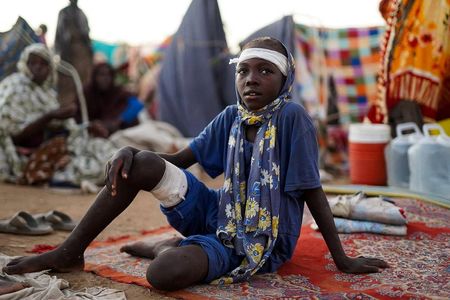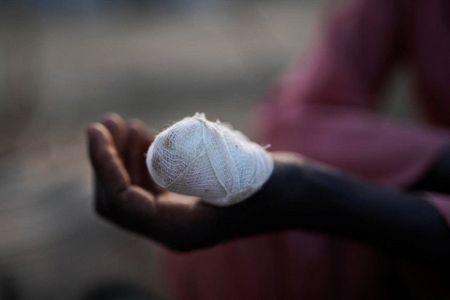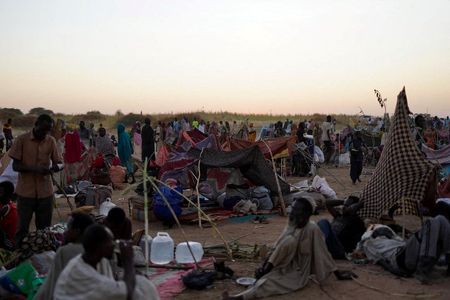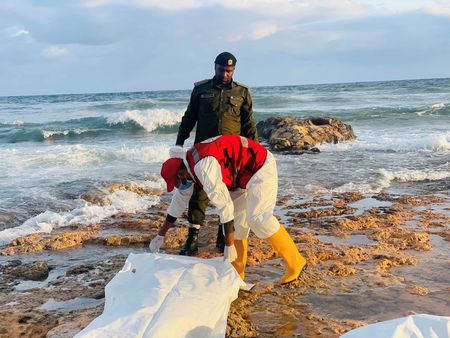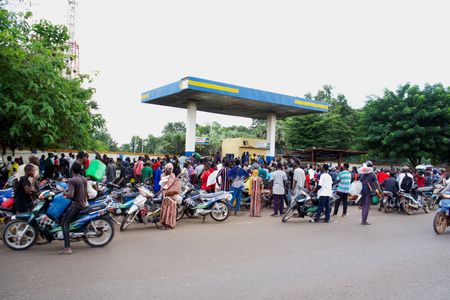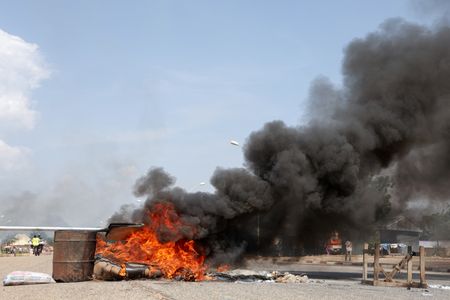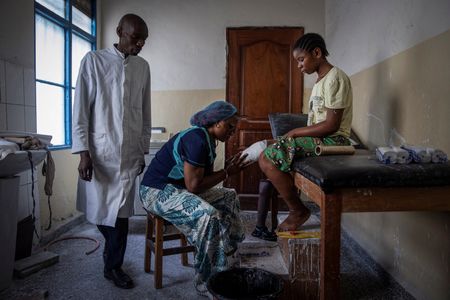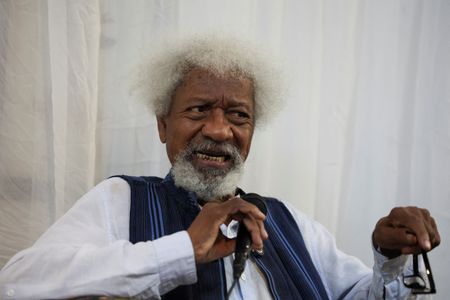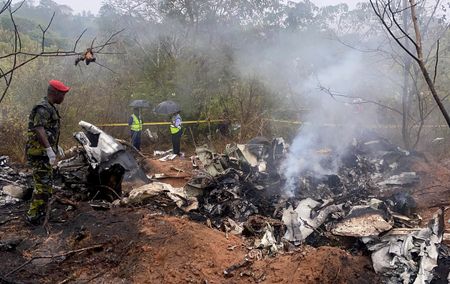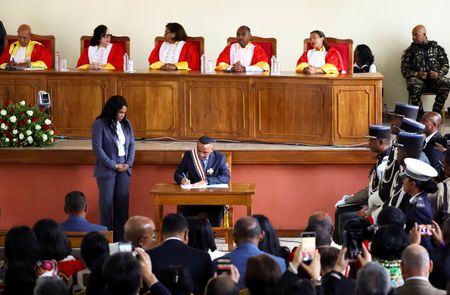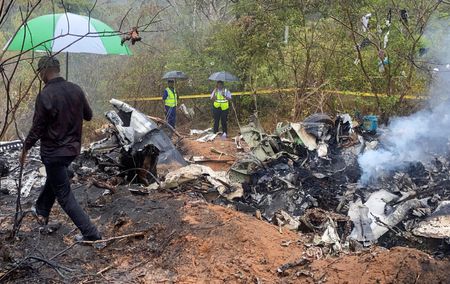By Nafisa Eltahir
(Reuters) -Sudanese paramilitary forces beat and shot men fleeing from a long-besieged city in Darfur after capturing it, according to an account from an escapee corroborated by statements from aid officials, satellite images, and unverified social media videos.
As al-Fashir, the Sudanese army’s last significant holdout in the western region of Darfur, fell to the paramilitary Rapid Support Forces (RSF) on Sunday, Ikram Abdelhameed and her three children and grandson were among thousands of civilians trying to leave.
Her account, in an audio recording obtained by Reuters after she arrived in a nearby town controlled by neutral forces, offers rare firsthand testimony of the RSF takeover of al-Fashir, where mobile networks are cut.
Aid groups and activists have warned of the potential for ethnically motivated revenge attacks as the RSF overwhelmed the army and allied fighters, many from the Zaghawa ethnic group.
The paramilitary’s victory after an 18-month siege consolidates its control of Darfur, where it has previously been accused of ethnically motivated killings, and solidifies a de facto split of the country under two parallel governments. Analysts say the RSF may use the momentum to try to expand its territory.
The two-and-a-half-year war between the RSF and the army has created what the U.N. has rated as the world’s biggest humanitarian crisis. As acute hunger spread, al-Fashir was one of the areas where famine took hold. Drone attacks in the city targeted hospitals and other civilian gatherings.
FIRING ‘AHEAD AND BEHIND US’
Abdelhameed’s account was obtained by a local journalist who has previously provided verified material for Reuters. He also provided photos of Abdelhameed which were verified by Reuters.
In a statement to media, the RSF-led political coalition cast doubt on the videos and statements about human rights abuses, but said that it would investigate such claims.
Abdelhameed escaped to the town of Tawila with the four children, all of whom she said had been injured in the long siege and bombardment of al-Fashir.
“We were running and they were chasing us, they were firing missiles ahead and behind us,” Abdelhameed said, adding that she lost track of her husband in the chaos.
They were stopped at an earthen barrier the RSF had erected around the city, where men were separated from women, she said.
“They lined the men up, they said, ‘We want the soldiers,'” Abdelhameed said. When none of the men raised their hands, an RSF fighter picked out some of them who were beaten and killed, she said. “They shot them in front of us, they shot them in the street.”
The women were taken to the other side of the barrier, where they could hear more beatings and gunshots, then allowed to leave.
“The soldiers told us to go ahead and the [remaining] men will follow, but we never saw them again,” she said.
The RSF did not immediately respond to requests for comment. Its leaders have said civilians in al-Fashir will be protected.
SATELLITE IMAGES SHOW BODY-SIZED OBJECTS
Abdelhameed’s account matches videos purportedly taken during the fall of al-Fashir which Reuters was not able to verify due to lack of location markers. The videos showed young men being questioned about being fighters then shot at close range.
Her account also aligns with satellite imagery published by the Yale Humanitarian Research Lab. That showed multiple clusters of objects consistent with the size of human bodies, surrounded by reddish discolouration that could come from blood, near RSF-constructed barriers and elsewhere in the city.
“We are horrified by credible reports of widespread violations, including summary executions, attacks on civilians along escape routes, house-to-house raids and obstacles preventing civilians from reaching safety,” the U.N. humanitarian team in Sudan said in a statement.
WEAKENED BY THE SIEGE
Abdelhameed said her two-month-old grandson, both of whose parents were killed in attacks during the siege, had been sickened by eating mouldy animal feed.
Since his mother died two weeks ago, she said she had only been able to give him milk once, and had been feeding him rehydration salts until they arrived in Tawila. An intravenous drip could be seen on the baby’s hand in a photo obtained and verified by Reuters, and a bandage covered his backside.
Medical aid agency MSF said that in a screening of arrivals from al-Fashir to Tawila last week, 75% of children were acutely malnourished, and 26% were severely malnourished.
Tawila hosts 800,000 internally displaced people, largely from al-Fashir and nearby Zamzam displacement camp.
According to IOM Sudan country director Mohamed Refaat, more than 26,000 people fled al-Fashir on Sunday and Monday, but fewer than 2,000 had arrived in Tawila. An estimated 250,000 people remained in al-Fashir city towards the end of the siege.
(Reporting by Nafisa Eltahir and Khalid Abdelaziz; Editing by Aidan Lewis)

